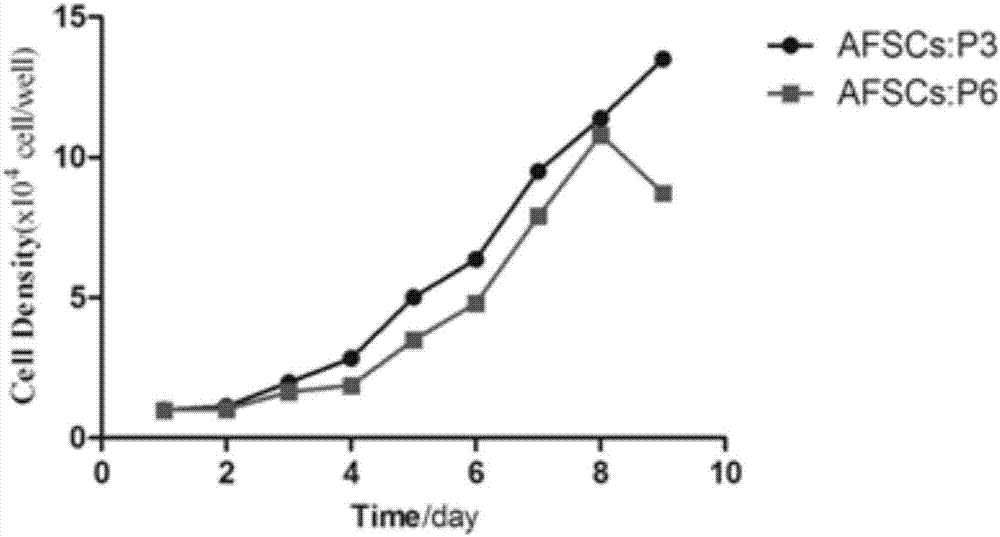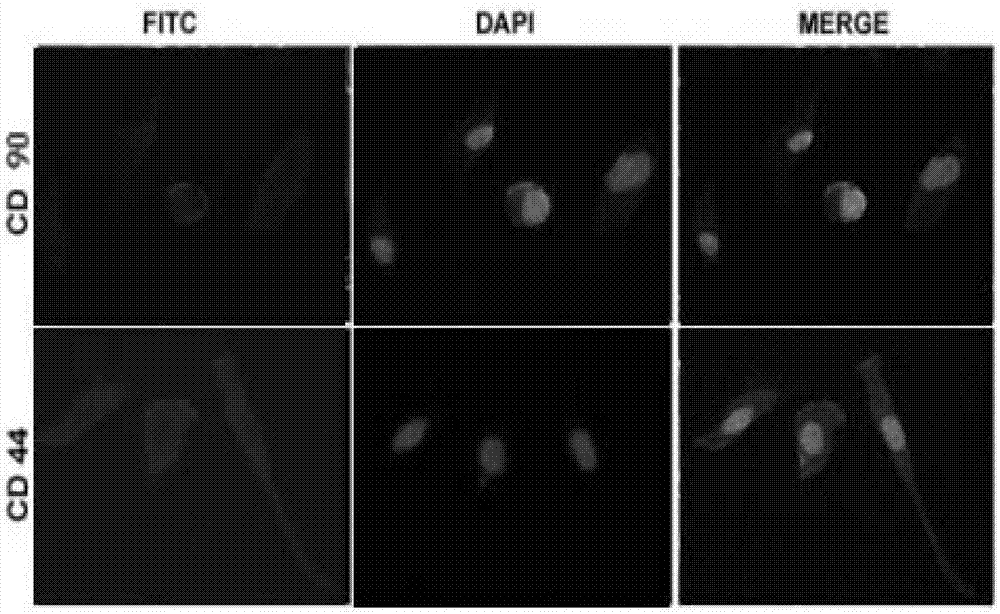Simple and quick culture method for amniotic fluid-derived stem cells (AFSCs)
A stem cell culture and stem cell technology, applied in the field of bioengineering, can solve the problems of infection risk of unknown pathogens, cumbersome and inconvenient culture steps, high operating costs, etc., achieve good growth activity, reduce experimental costs, and simplify experimental operation steps.
- Summary
- Abstract
- Description
- Claims
- Application Information
AI Technical Summary
Problems solved by technology
Method used
Image
Examples
Embodiment 1
[0023] Example 1: Isolation and culture of amniotic fluid stem cells
[0024] (1) Primary culture of amniotic fluid stem cells:
[0025] Dilute the amniotic fluid sample with EDTA-added PBS 1:1; centrifuge at 1200r / min for 5min; discard the supernatant, add amniotic fluid-specific medium and repeatedly blow and mix; inoculate on a gelatin-coated Petri dish; 2 The growth of amniotic fluid stem cells can be observed after 4-5 days of culture under the environment conditions.
[0026] (2) Subculture of amniotic fluid stem cells:
[0027] When the primary cultured amniotic fluid stem cells reach 80-90% confluence, discard the cell culture medium; wash three times with PBS; cover the cells with 0.25% trypsin containing 0.02% EDTA to dissociate the cells; wait for the cells to shrink and become round And stop digestion with complete medium containing 10% fetal bovine serum when it starts to fall off from the culture dish; blow the mixture repeatedly until the adherent cells fall o...
Embodiment 2
[0029] Embodiment 2: Drawing of growth curve of amniotic fluid stem cells
[0030] The amniotic fluid stem cells of passage 3 and passage 6 were obtained by subculture, counted, and the growth curve was drawn according to the obtained data, with a scale of 1×10 4 Inoculate into a 24-well plate, take three wells every 24 hours, and record the average number. like figure 1 The growth curve of amniotic fluid stem cells is shown.
Embodiment 3
[0031] Example 3: Immunofluorescence identification of amniotic fluid stem cells
[0032] (1) The amniotic fluid stem cells of the third generation were obtained by subculture, seeded on a gelatin-coated 24-well plate, and when 70% confluence was reached, the culture medium was discarded and washed twice with PBS;
[0033] (2) Add 3.7% paraformaldehyde solution to the 24-well plate to fix for 30 minutes, and wash the cells three times with PBS containing 5% FBS (10 minutes each time);
[0034] (3) Add permeabilization agent (0.1% TritonX-100, PBS) to the 24-well plate, discard after incubating at room temperature for 15 minutes, wash with PBS three times, 5 minutes each time;
[0035] (4) Add blocking solution (10% FBS:PBS) to the 24-well plate, block at 37°C for 1 hour, discard it, wash with PBS three times, 5 minutes each time;
[0036] (5) Incubate overnight at 4°C with primary antibodies against CD34, CD44, and CD90 (1:200, Santa Cruz, CA). After removing the primary anti...
PUM
 Login to view more
Login to view more Abstract
Description
Claims
Application Information
 Login to view more
Login to view more - R&D Engineer
- R&D Manager
- IP Professional
- Industry Leading Data Capabilities
- Powerful AI technology
- Patent DNA Extraction
Browse by: Latest US Patents, China's latest patents, Technical Efficacy Thesaurus, Application Domain, Technology Topic.
© 2024 PatSnap. All rights reserved.Legal|Privacy policy|Modern Slavery Act Transparency Statement|Sitemap



